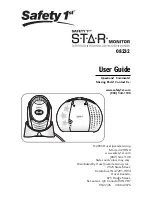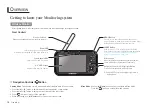
An increase of blood pressure increases the burden onto the
heart, affects blood vessels making their walls thick and less elas-
tic. One of the features of the hypertension is its ability to remain
unnoticed for the patient at its early stages. That’s why the self-
control of the blood pressure is so important. With the illness
progressing, headaches and regular dizziness appear, the sight
declines, the functioning of vitalses (encephalon, heart, kidneys,
blood vessels) breaks down. Without special treatment the com-
plications of hypertension might be kidney damages, breast-pang,
paralytic stroke, aphasia, dementia, heart attack and stroke.
9.2. Which values are normal?
The world standard as for the norms of the blood pressure is
the Classification* of the World Health Organization (WHO):
Blood
Pressure
Category
Systolic
Blood
Pressure
(mmHg)
Systolic
Blood
Pressure
(mmHg)
Measures
Hypotension
< 00
< 0
Doctor’s
control
Optimum
pressure
00 … 0
0 … 0
Self-control
Normal
pressure
0 … 30
0 … 5
Self-control
High normal
pressure
30 … 40
5 … 90
Self-control,
mode of life
correction
Mild hyper-
tension
40 … 0
90 … 00
Consultation
with doctor
Moderate
hypertension
0 … 0
00 … 0
Consultation
with doctor
Severe hyper-
tension
> 0
> 0
Consultation
with doctor
* printed with curtailments
Содержание M1-S-1
Страница 19: ...19 ...
















































